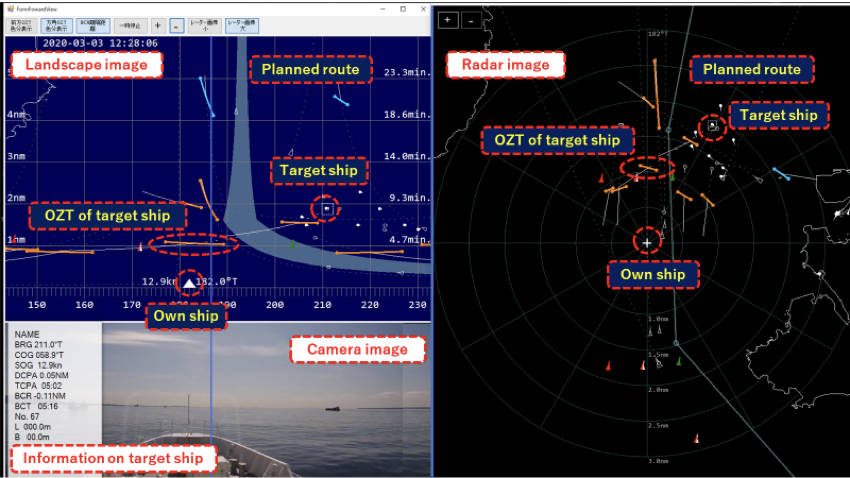Part of initiative to realize autonomous ships
Mitsui O.S.K. Lines, Ltd. (MOL) today announced that the company has signed a contract to conduct a joint study on collision avoidance algorithms and autonomous collision avoidance. The company is teaming up on the study with MOL Marine Co., Ltd., National Maritime Research Institute of National Institute of Maritime, Port and Aviation Technology(MPAT, Tokyo University of Marine Science and Technology, MOL Techno-Trade, Ltd., and YDK Technologies Co., Ltd.

Demonstration testing with Tokyo University of Marine Science and Technology’s Shioji Maru has been conducted in congested sea areas such as Tokyo Bay as a part of continuous efforts to develop computational algorithms using OZT and avoidance route computational algorithms. The test confirmed the ability to estimate OZT targeting several target ships in actual operation and develop and suggest avoidance routes in real time onboard and verified the system’s effectiveness in supporting collision avoidance. The test also aimed to develop a collision avoidance system that realizes medium-to-long-term strategies for avoidance navigation well before target ships pose a risk in congested sea lanes, and takes into consideration the experience of maritime officer and other personnel in terms of safety and security.
This study advances the system’s development of Assessment in MOL’s initiative on autonomous navigation.
MOL has moved ahead with advanced support of safe operation and reduction of its environmental impact, as set out in the "ISHIN NEXT-MOL SMART SHIP PROJECT-," started in November 2016, and aims to become customers' first choice as a logistics partner by applying ICT technology to improve service quality and efficiency.









